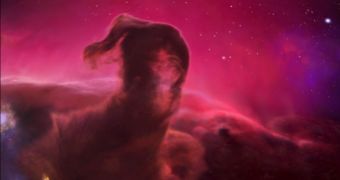After two additional years of measurements with NASA's Wilkinson Microwave Anisotropy Probe, which narrowed the uncertainty by a few tens of millions of years, last week astronomers finally confirmed the precise age of the universe: 13.73 billion years, give or take 120 million years.
"Everything is tightening up and giving us better and better precision all the time. It's actually significantly better than previous results. There is all kinds of richness in the data," said Charles L. Bennett form Johns Hopkins University, professor of physics and astronomy and leader of the group that analyzed the data.
According to theory, about 380,000 years after the so-called Big Bang event, the matter in the universe cooled enough to allow protons and electrons to form hydrogen atoms. The evidence of the interaction is visible even today in the universe, in the form of the Cosmic Microwave Background radiation coming from all around us.
However, the radiation pattern is not exactly uniform, but it presents slight variations in density, as the WMAP revealed back in 2001. The matter distribution evidence seems to accurately follow the model of cosmic inflation, which states that in the first trillionth of a trillionth of a second the universe suffered a violent expansion into space. In fact the measurements are so precise that the results can make clear difference between several models of cosmic inflation.
"Some of them are now completely ruled out, some of them are hanging at the edge and some of them are perfectly fine. We are sorting between these things," said Bennett.
The WMAP data also showed that the universe is filled with an 'ocean' of tiny subatomic particles known to us as neutrinos, which may have been created during the Big Bang. Bennett reveals that the measurements made by the Wilkinson probe are so accurate, that they can actually make distinction between several neutrino flavors that haven't even been discovered inside particle accelerators here on Earth.
Bennett adds that the first stars could have formed in the early universe about 400 million years after the Big Bang event, but the star light emitted into interstellar space split hydrogen atoms back into their constituents, protons and electrons, thus creating a fog that deflected the cosmic microwaves. This process would have taken about 500 million years to complete.

 14 DAY TRIAL //
14 DAY TRIAL //